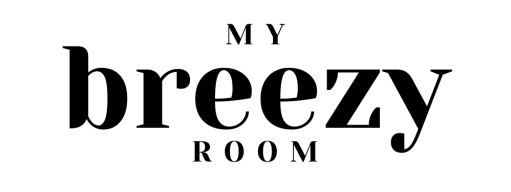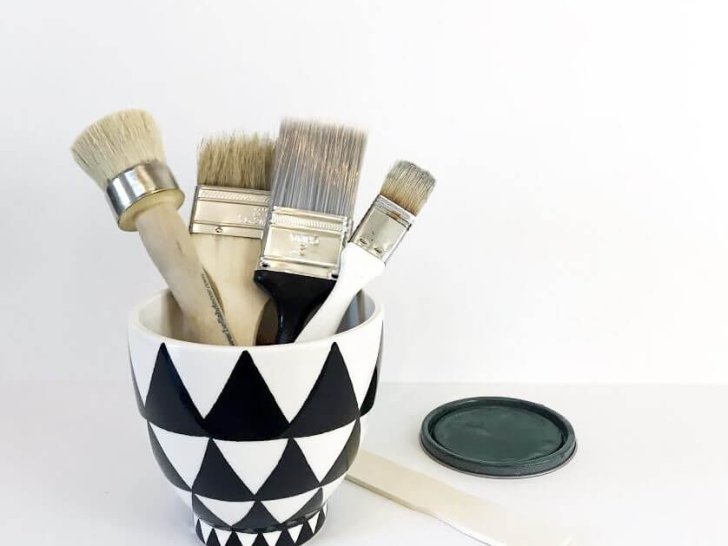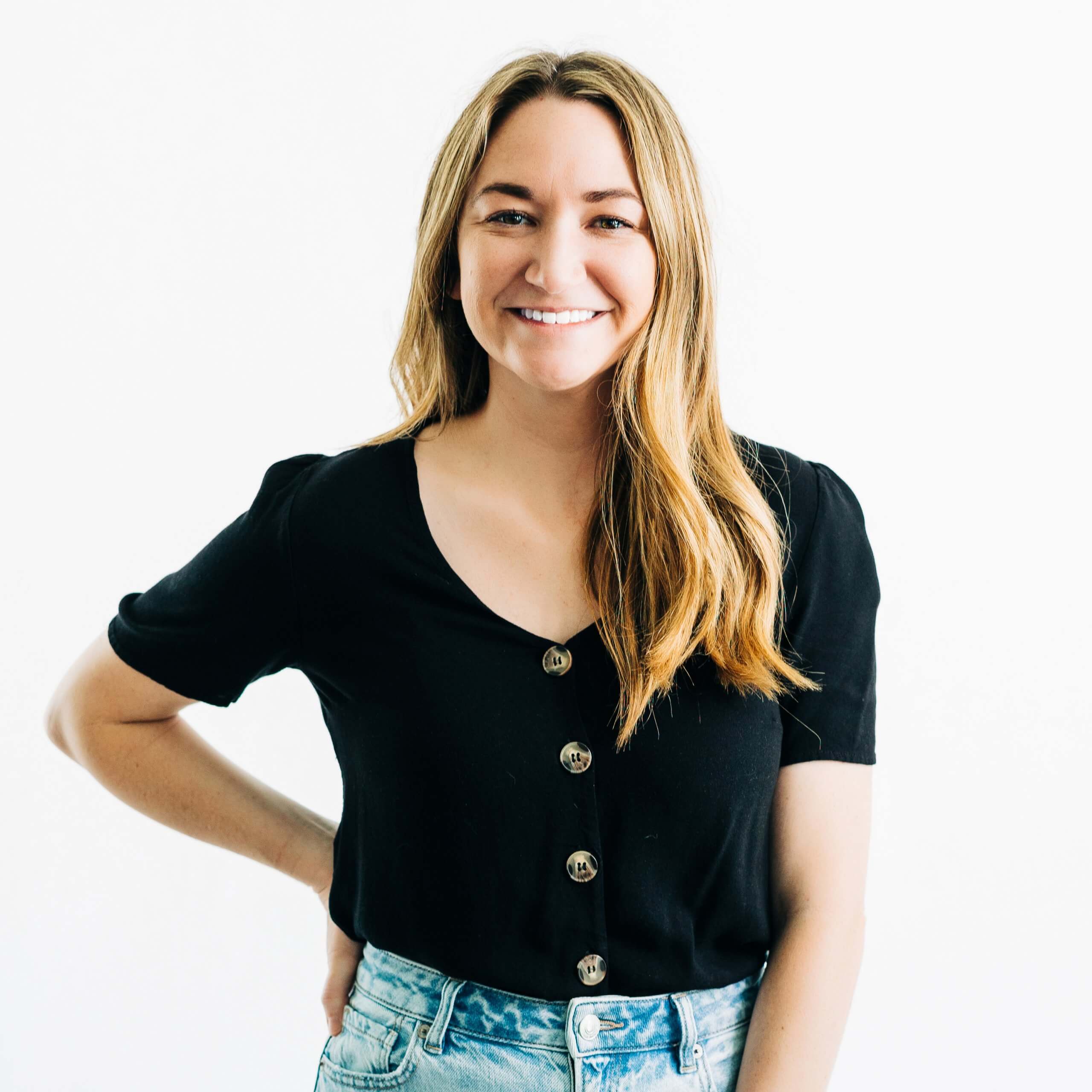When I first started painting furniture, chalk paint was all the rage. It promised quick transformations with no sanding, no priming, and an effortlessly distressed look—basically, everything a beginner DIYer dreams of.
And I’ll be honest, it did make painting feel less intimidating. It helped me jump into my first furniture makeovers with confidence, and I still think chalk paint is a great entry point for new painters.
But after years of refinishing furniture (both for myself and clients), I’ve moved on from chalk paint—and here’s exactly why.
Want to see what I use instead? Scroll down for my current go-to paint and supply list, with links to my favorite products.
1. The No-Sanding, No-Priming Promise? Not Always True
One of chalk paint’s biggest selling points is that it doesn’t require any sanding or priming.
In theory, this sounds amazing. But in reality? Not every piece of furniture is that cooperative.
Especially when you’re working with older, previously finished wood, there’s a high chance of:
- Bleed-through from old stains
- Raised imperfections that show through paint
- Poor adhesion without proper prep
If you’re going for a smooth, clean finish, sanding and priming is still the most reliable way to get there. I’ve learned this the hard way—and now I always keep a can of this oil-based primer on hand to block stains and prep glossy surfaces.
Pro Tip: Chalk paint can sometimes cover these issues, but they often come back over time. A little prep goes a long way.
2. Chalk Paint Isn’t as Durable as Conventional Products
This is the main reason I stopped using chalk paint.
Most chalk paint finishes require a wax topcoat for protection—but that wax:
- Needs to be reapplied every 1-2 years
- Takes 30 days to fully cure
- Scratches off easily if not applied perfectly
I can’t tell you how many pieces I waxed that still felt tacky or scratched easily, even months later. (Probably user error, but still frustrating.)
Eventually, I switched to using Polycrylic as my topcoat. It’s water-based, durable, and doesn’t yellow over time like polyurethane. Game changer.
Want an even tougher finish? MasterClear Topcoat is one of my favorite professional-grade sealers—perfect for pieces that get heavy use.
3. Chalk Paint Is Pricey
When I started painting more frequently, I realized just how expensive chalk paint can be.
Most brands are $35–$45 per quart—which adds up fast if you’re working on larger pieces or want a variety of colors in your stash.
Now I use latex paints that give me the same smooth finish, with better durability and more color options at a better price.
Here’s what I currently use:
My Current Go-To Furniture Painting Products
If I had to pick only three products for painting furniture, these would be it:
Zinsser Cover Stain Primer
Blocks old stains, seals slick surfaces, and preps for paint—especially important for vintage wood.
Valspar Furniture Paint
Self-leveling, smooth finish, and way easier to use than traditional milk paint. It’s technically a mineral-based acrylic, so don’t let the name fool you!
Modern Masters MasterClear Top Coat
Durable, professional finish that holds up to real life.
Polycrylic is a more budget friendly alternative.
These products last across multiple projects and are well worth the investment.
Want my full supply list + step-by-step process? Download my free furniture painting guide here and get everything I use for pro-quality results.
Still Love Chalk Paint? That’s Totally Okay!
I’m not here to knock chalk paint entirely. Brands like Annie Sloan and CeCe Caldwell’s helped me fall in love with furniture painting. And for beginners, chalk paint still has its perks:
- Tons of gorgeous colors
- Easy to distress
- Low odor and beginner-friendly
- Available at specialty boutiques with hands-on classes
And if you’re looking for an all-natural or VOC-free option, some chalk paint brands offer that too.
Just know that even with chalk paint, some projects will still require sanding or priming—especially if you want your finish to last.
Best Brushes for Any Type of Paint
Whether you’re using chalk paint, latex, or mineral paint, I highly recommend keeping a few angled brushes like this one on hand. They give you smooth edges and great control on furniture projects.
I also love these chip brushes for oil-based primer or quick projects—they’re budget-friendly and get the job done.
Chalk paint got me started on my painting journey—and for that, I’ll always be thankful.
But after years of refinishing furniture, I’ve found that conventional prep methods and more durable products give me better, longer-lasting results (especially when working for clients).
So while I don’t use chalk paint much anymore, I totally understand why it’s a favorite for beginners and casual DIYers.
Have You Tried Chalk Paint?
Let me know your thoughts! Do you still swear by it, or have you moved on to other paints? Drop your experience in the comments—I’d love to hear what’s worked for you.



Cathy
Saturday 9th of November 2024
Hi, wish I would have found this article first. I just painted a large bathroom mirror frame, 3 -tier shelf and a door hook with Annie Sloan. Got the 1L and have so much left.!! The sample size probably would have covered it. Will apply wax after 24 hrs. Will it be okay in the bathroom or should I apply a different top coat? Thanks.
Kala
Sunday 10th of November 2024
You could use polyacrylic to be safe. But the wax is probably fine on a mirror that's not really going to be touched on a regular basis anyway! If you already had it on hand, I'd just use that!
Diego Nieves
Wednesday 21st of October 2020
Awesome tips. thanks a lot for sharing
Arya
Friday 7th of August 2020
Thanks for this article. I am planning to paint an old furniture for the purpose of selling it. However this would be my first experience of painting a furniture. What would you recommend as I want to deliver a quality product. Please suggest. Thank you so much.
Christine
Thursday 23rd of May 2019
Hi! Came in via Pinterest. I agree with you on many fronts. -Urathane or oil based products yellowing is my biggest dislike. I have always been iffy on chalk paint, although I do love the feel of it. It has helped me develop some techniques I now use in latex/acrylic painting, though, I'd never have thought of.
Like using inexpensive paint base as a 100% matte, invisible clear topcoat, which lets the chalky feel remain. Using clear, satin polyacrylic as the base paint under crackle finishes to let the wood actually show through the crackles. Putting a hefty squirt of white glue into homemade chalk paint for even better adhesion. Stuff like that.
You just can't beat paint samples made into chalk paint for the price. That said, +glue, +polyacrylic top coat or kiss it goodbye! :)
I've never understood the insanity of waxed finishes in the kitchen. One of the cheaper ways of removing wax (not more expensive wax overtop!) is Windex. Or anything ammonia based. Not everyone thinks vinegar is the cure-all, and some of us still use the tried-and trues. No, my father isn't Greek, and no, I'm not having a big fat wedding. Anyway, one overspray of a Windex squirt removes wax, so there goes your finish!
I could go on, but I get'cha. I guess I feel I've moved past entry level painting. I invest the time for a good substrate for a strong, durable finish. Someday I'll tell 'ya about my paint stripping tricks that make it fun. But that's another day!
Barbi
Friday 2nd of October 2020
So, wait, white glue added to homemade latex = a better adhesion, or longer lasting and then finished off with polyacrylic? I want to redo a midcentury cabinet with glass doors with wood munions. The finish looks original. I definitely don't want to get ammonia on it when cleaning the glass. After reading all these differing methods I want to be clear about which is best. What is the glue ratio? Thanks for any responses.
Kala
Thursday 23rd of May 2019
I love everything you've learned from chalk painting. I agree with everything you've said here - Great takeaways! And I definitely want to know about any strategy that claims to make stripping furniture "fun" haha!
Vicki Hulsey
Monday 11th of February 2019
I painted my Kitchen cabinets previously. I did the standard way. Sanded, primed with Zinsser Cover. Lightly sanded, lightly primed again. (these were dark cherry wood cabinets). I then painted with BM paint Advanced in a Weathered White Color. Let them cure completely while I moved on. When dry, lightly scuffed and needed another coat BM ADV. The problem is the BM would never cure completely. I waited for over 2 months or even longer for the interior to load. I finally topcoated with General finished poly acrylic and they got less gooey. NOW i need to paint cabinets in a new old home. I painted a very large piece in a previous home with Belle Craie. It has been taken apart 2 times, Stored,moved long distance,crown and all and NO nicks. It is still beautiful. Used the entire Belle Craie system. Problem? too many cabinets for the cost and I want a specific color. Was going to mix my own chalk paint. Still sand,prime,paint 2 coats,polyacrylic or use Belle Craie top coat which is flat and beautiful. NOW I am confused. The drying time and the gooey feel is my hold up to the BM Advance or Cabinet Coat.HELP!!! Suggestions needed.
Kala
Tuesday 12th of February 2019
I used General Finishes Milk Paint on my cabinets and haven't had any problems. It's actually an acrylic based paint. What was the weather like when you painted them? Was it really cold or really humid? There are so many factors that go into how a paint cures it's hard to tell what happened. It does sound like you waited the appropriate amount of time between coats. I recommend waiting 24 hours. If the weather is cold or humid where you live I recommend finding a way to paint everything indoors. That would be my best guest as to what went wrong. Good luck!